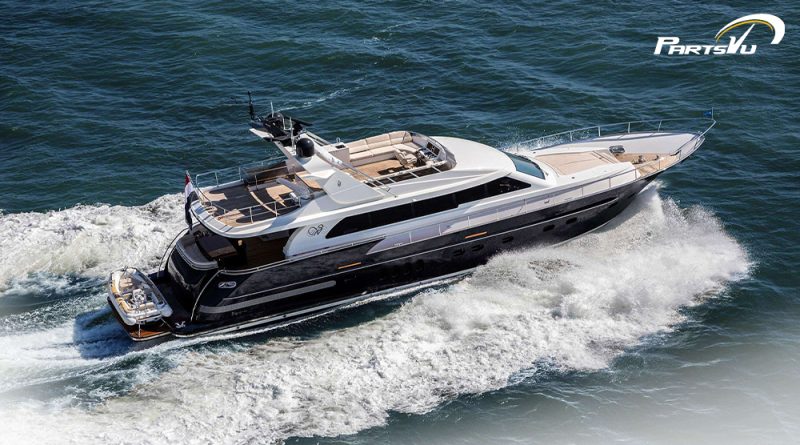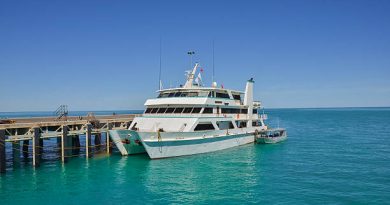All Aboard! Everything You Need to Know About Boat Parts from PartsVu
Boat Parts from PartsVu
Boat ownership can be an exciting, rewarding experience; however, there’s still the matter of having to know how to fix things that go wrong with your vessel. There are many different parts and pieces to any boat, and if one breaks or stops working, you need to have the skills and know-how to replace it quickly and effectively. That’s where this article comes in handy! We’re going to walk you through all the basic boat parts from PartsVus o that you know what parts you should keep an eye on when it comes time to make repairs.
Why Boat Parts Needed
If you are planning a boat trip, it is important to have an understanding of the different parts that make up the boat. Here is a quick review of what are some of the important boat parts and why it’s so important to keep them along.
The Anatomy of a Sailboat
A sailboat is the most common type of boat. It derives its power from wind, or sails and it can be a small or large vessel. Sailboat are typically made up of three main sections: the fore-body, the aft-body, and the mast. The fore-body is where you will find the steering wheel and room for people who are driving or navigating. The aft-body usually has some sort of machinery such as a motor that allows for motorized propulsion if need be.
The Keel of Boat
The keel is the backbone of your boat. It provides stability and shape for the hull. With a well-maintained and properly aligned keel, you’ll have a better time navigating the water and staying on course. The keel also helps keep your boat upright on the surface of the water, which is important because it can be difficult to right an overturned boat with just a single person. If you’re going boating anytime soon, make sure your boat’s parts are in top condition
The Hulls
The hull is the bottom of a boat, and it’s what provides buoyancy. It’s made up of many pieces like the keel, rudder, ballast tanks, and lifeboats. The keel is the main part of the hull that provides stability. It’s usually a heavy piece of metal or wood that goes straight down from bow to stern and acts as a counterweight for the boat. The other three components are important for steering and stability. Ballast tanks are fill with water when sailing in order to balance out the weight on each side of the boat. Lifeboats are use when there are emergencies and they’re stored near the front or middle section of a ship. Other parts of a hull include decks, bulkheads, compartments and staircases.
A deck is the top layer of plating on the outside of a ship that you walk around on. Bulkheads are walls inside the hull that divide it into separate rooms. Compartment are create by bulkhead and have opening only at their ends where people can enter them through hatche. Staircases go from one level to another within a compartment.
Rudder
A rudder is a device on a boat or ship that turns the vessel. It can be use in either direction, and sets the direction of the boat’s course relative to the wind. They are typically part of a ship’s steering mechanism, although smaller boats may use a tiller instead. The size and shape of a rudder can be important for its effectiveness: when using it for steering, larger rudders provide more force; when using it for stabilizing the boat, small rudders are more effective. T
hey were originally one of three ancient Greco-Roman inventions: the skeuos, which was a wooden plank covered with ox hide to protect passengers from water splashes; the korax (also called vox), which was an instrument shaped like a cone and made out of lead with fingers attached to one end so it could control the level of water in vessels by turning them upright; and finally, the ipspula which was simply just an oar.
Propulsion
A boat propeller, or more accurately called a propeller, is use in order to create thrust that can move the boat forward and propel it through water. If a boat doesn’t have a propeller, then it would not be able to move at all since water cannot push against the bottom of the boat without any type of propulsion.
Rigging
The first step in maintaining your boat‘s rigging system is inspecting it regularly. Check all rigging lines for wear or damage and replace them as needed. Remember that every time you use a line, it wears down – so do not wait until you are at sea to replace these items. Make sure all connections are tight and securely fastened.Check shackles and clamps regularly for excessive wear or rust; they should be replace if there are any signs of corrosion or damage. If you find an issue with a shackle, consult your owner’s manual on how to make the necessary repairs.
It’s also important to know what type of line you’re dealing with: nylon will last longer than polyester but polyester has greater strength. One way to tell which type of line it is: pull the rope against itself with two hands; if the rope slides against itself easily, then it is probably polyester. If the rope grips tightly against itself like a Velcro strip, then it is likely nylon.
Conclusion
Boat parts are crucial for the success of your vessel. They can be difficult to find, expensive, and hard to install. Think about all the things that could go wrong with your boat’s engine or hull; it’s always good to have a backup plan or spare parts on hand just in case. Keep these tips in mind when you’re out on the water and you’ll be ready for anything that comes your way.




